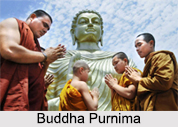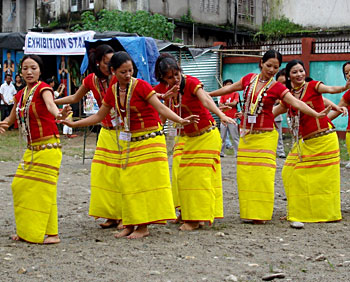 Hola Mohalla is referred to the unique celebration of the Holi festival in the state of Punjab. The rituals and customs of this festival are completely different from the traditional celebration. It also holds a distinct significance for which it is joyously feted in the state. The week long festival begins on the first day of the lunar month of Chett which mostly falls in the month of March. On the occasion of Hola Mohalla a grand annual fair is organized in the city of Anandpur Sahib on the next day of Holi.
Hola Mohalla is referred to the unique celebration of the Holi festival in the state of Punjab. The rituals and customs of this festival are completely different from the traditional celebration. It also holds a distinct significance for which it is joyously feted in the state. The week long festival begins on the first day of the lunar month of Chett which mostly falls in the month of March. On the occasion of Hola Mohalla a grand annual fair is organized in the city of Anandpur Sahib on the next day of Holi.
History of Hola Mohalla
The festival was started by the tenth Sikh Guru, Guru Gobind Singh. He had set up the Khalsa Panth when he was involved in the battle between the Mughal Emperor Aurangzeb and Hill Rajputs. He started this tradition by organizing a procession at Anandpur on Chet vadi on 22 February 1701. The festival of Holi which marks playful celebration with colours was converted by the Guru to Hola Mahalla in which the Sikhs demonstrate their martial skills. It was done to prevent the grim struggle against the imperial power and to channelize the energy of the people for better cause. It also aimed at strengthening the Sikh community physically through conducting military exercises and mock battles. Since then it became a significant event organized every year in Holgarh Fort, at the northwest of Anandpur Sahib.
 Thus gradually this tradition which emerged in Anandpur Sahib spread across the foothills of the Shivaliks, nearby Kiratpur Sahib and other Gurudwaras around the globe.
Thus gradually this tradition which emerged in Anandpur Sahib spread across the foothills of the Shivaliks, nearby Kiratpur Sahib and other Gurudwaras around the globe.
Features of Hola Mohalla
Hola Mohalla is observed for a week in which dare-devil acts are performed by the folks of Sikh community to showcase their physical strength. These acts include tent pegging, Gatka, standing erect on two speeding horses, bareback horse-riding and many others. To lighten up the ambience of the celebration, poetry and music competitions are also held. Hola Mohalla also hosts a number of durbars where Sri Guru Granth Sahib is kept and religious lectures and kirtans are conducted. This customs plays a vital role in empowering the soul of Sikh community. On the last day of Hola Mohalla a long procession takes place which begins from one of the five Sikh religious seats known as Takth Keshgarh Sahib till the Takth. It is led by Panj Pyaras and cross prominent Gurudwaras such as Mata Jitoji, Lohgarh Sahib and Qila Anandgarh.
Voluntary community kitchens, also known as `langar` are arranged by the local folks for the visitors of the festival. This is considered as a part of community service. The raw materials for the service such as vegetables, wheat flour, sugar, milk etc are supplied by the villagers residing nearby. Activities like cooking and cleaning the utensils are volunteered by the women. The pilgrims are served with traditional cuisine. Nihang Singhs, a sect recognized by their long embellished turbans and distinct blue traditional robes, are seen prominently in the festival.



















